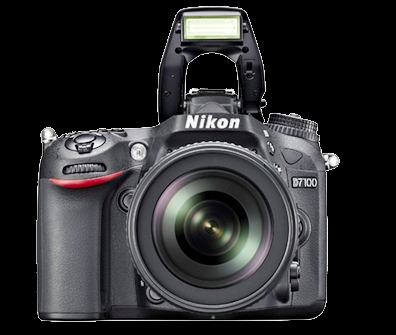Digital slrs
Digital slrs

Digital slrs
Introduction, history of digital slrs
In the past digital slrs did’t existed. In 1969 Willard S. Boyle and George E. Smith invented the digital (CCD) sensor. They awarded Nobel prize in 2009. In 1991 Nikon released the D1 camera. In 2001 Canon released the 1D camera. It was a 4.1 Megapixel camera at that time. In 2003 Canon released the 300D a model for a consumer market.
Why digital slrs ?
Over the traditional film camera, digital camera offers lots of advantages:
1. No cost of film
2. Images immediately can be checked, good or not, remake it with different parameteres if they not acceptable.
2. Digital images can be corrected and reused in many ways.
3. Better in low light situations.
4. Higher speed.
What is an slr camera ?
The thing is not complicated, there is a mirror and a viewfinder, the mirror led the light to the viewfinder this way we see out of the lens. If we make a picture the mirror flips up, and the light is captured on the sensor at the internal side of the LCD monitor. Normally with an Slr camera we cannot make pictures like with compact cameras using the Lcd. Today’s newer slr cameras has a solution though called Live view mode which does exactly that, to use the camera like a compact camera. Older cameras does not have this feature. If it is important for you check before buy does the camera has live view or not. If the camera makes video it has a live view.
Why is it better the digital slrs than the compact cameras?
1. Through the viewfinder we see a real picture, perhaps little darker than with our eyes. It is much useful in bright light or in dark situations when most Lcd’s are useless. The viewfinder and the mirror makes the camera little bigger than compact cameras.
2. Usually this cameras has much bigger sensors, than compact cameras.
Drawbacks of digital slrs
Although digital slrs are capable of making much better pictures, than compact cameras, but not so automatically. Almost every slr has an auto mode, but this cameras not sharpen, enhance contrast, adjust, treat pictures like compact cameras do. Some knowledge is needed even to use the camera. Other drawback is the cost included.
Types and differences
Sensor size can be Full frame(36*24mm) and Aps-C or Dx(22.5*15mm). The Full frame cameras has the best possible picture quality because of their bigger photosites, but this cameras are usually very expesive. Aps-C cameras has much more pixels at the same sensor area this way they have better resolution to make pictures of distant object such as birds or wildlife.
Types by grade
There are basically three grades:
1. Pro cameras – most expensive, feature packed, pro build heavy cameras
2. Prosumer cameras – not so expensive, but feature packed models, very good value usually
3. Entry level cameras – little downgraded in terms of functions, but not so much in terms of picture quality.
The difference in picture quality is not huge. In good light all slr cameras are capable to make excellent pictures. The picture quality more depends on lenses though. On the other hand you can’t have everything for nothing.
Main manufacturers
The two main manufacturers of Digital slrs are Canon and Nikon. In market share Canon sells little more equipment than Nikon. Sony, Sigma, Pentax, Fuji, also manufactures slr cameras.
Newest functions
Touch screen, HD video, flip-out screen, live view are the newest functions.
The video of the slr’s are of high quality, because of their excellent huge sensors, but the autofocus not works as a camcoders, perhaps some years and works flawlessly.
Today’s best digital slrs (Jan 2014)
Full frame: Nikon d800, d610, Canon 5d Mk III, Canon 6d
Aps-C: Nikon d7100, d7000, Canon 70d,7d
Cheaper: Nikon d5200,d5100
______________________________________________________________________
Equipment reviews
Equipment reviews
See the reviews in the sub-menus at the right
sidebar, not everything included in the links
below.
Canon camera comparisons
Canon Full Frame comparison table
Canon Aps-C camera comparison table
Canon camera specifications
Canon 5d Mk3 detailed specification
Canon 7d detailed specification
Canon 70d detailed specification
Canon 60d detailed specification
Canon 40d detailed specification
Canon Aps-C reviews
Primes
Samyang 8mm f3.5 review
Samyang 14mm f2.8 review
Sigma 35 f1.4 review
Canon 35mm f2 review
Canon 40mm f2.8 STM review
Canon 50mm f1.4 review
Canon 50mm f1.8 II review
Canon 135mm f2 review
Canon 200mm f2.8 review
Canon 300mm f4 is review
Canon 400mm f5.6 review
Zooms
Sigma 10 20mm review
Tokina 11 16mm review
Canon 15 85 review
Canon 15 85 vs Canon 24 105
Sigma 18-35 f1.8 review
Canon 24 70 f2.8 L review
Canon 24 105 review
Canon 70 200 f4 review
Canon 70 200 f2.8 review
Soligor 100 400/4.5-6.3 review
Teleconverters
Kenko 1.4 dgx review
Kenko Pro300 1.4 dgx review
Canon 2x MkII review
Soligor 2x converter review
Kenko 3x converter review
__________________________________________________________
Birds:
Travel:
10 Things to see in Hungary
10 Things to see in Budapest
Chalkidiki Greece Sarti
Lake Balaton
New, coming products
Samyang 10mm f2.8 ED AS NCS CS
Tamron 150 600 f5-6.3-Di Vc USD tele
Sigma 24 105 f4 dg os hsm a
Latest reviews/news/articles:
Best value Canon lenses
Tamron 150 600 f5-6.3-Di Vc USD tele
Milc vs Dsrl
Canon 15 85 vs Canon 24 105
Canon 24 105 review update
Sigma 18-35 f1.8 review
Sigma 35 f1.4 review
Nikon camera comparisons
Nikon Full Frame comparison table
Nikon Aps-C comparison table
Nikon camera reviews
Nikon d5200 review
Nikon d7000 review
Nikon camera specifications
Nikon d7100 detailed specification
Nikon d7000 detailed specification
Nikon d5100 detailed specification
Nikon Aps-C reviews
Nikon 35 f1.8 review
Nikon 18 105 review
Nikon 16 85mm review
Nikon 18 55mm review
Nikon 17 55mm f2.8 review
Nikon 16 85 vs 18 105